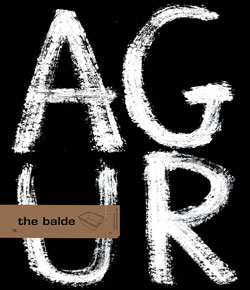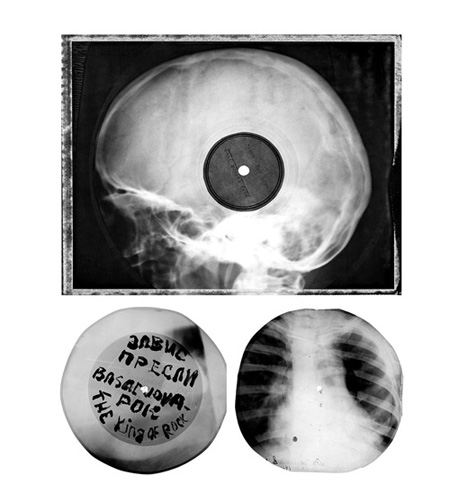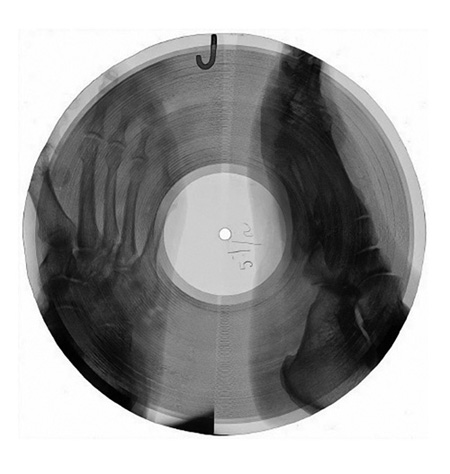music in bones
Wilhelm Conrad Röntgen (1845-1923) professor of physics at the University of Würtzburg, detected and produced X radiation in 1895. In 1901, he was awarded the Nobel Prize for the special application of the electro-magnetic radiation in shortwave that he had come across; for the x-ray photographs of bones.
József Hajdú, like most of us, first came into contact with x-rays when he broke a bone as a child. Later on in life, while he was working in a museum he found a large collection of x-rays, but they weren’t in the part of the museum dedicated to health. Believing them to have been erroneously stored, he set about ordering the x-rays. He quickly realised that there was something strange about the radiographs. It didn’t take him long to discover that the x-rays, as well as images, also housed sound. In the 30s, skilful technicians at Radio Hungary had used these apparently useless x-rays to make sound recordings. Europe was at war at the time and all vinyl was being used in the war effort so, using a special machine, radiographs were used to record music. These radiographs were later cut into 23-25 diameter pieces, often asymmetrically, and a hole was cut in the centre in order to play them on record timetables. Hungarian public radio still has a huge number of x-ray records in their archives.
József Hajdú, like most of us, first came into contact with x-rays when he broke a bone as a child. Later on in life, while he was working in a museum he found a large collection of x-rays, but they weren’t in the part of the museum dedicated to health. Believing them to have been erroneously stored, he set about ordering the x-rays. He quickly realised that there was something strange about the radiographs. It didn’t take him long to discover that the x-rays, as well as images, also housed sound. In the 30s, skilful technicians at Radio Hungary had used these apparently useless x-rays to make sound recordings. Europe was at war at the time and all vinyl was being used in the war effort so, using a special machine, radiographs were used to record music. These radiographs were later cut into 23-25 diameter pieces, often asymmetrically, and a hole was cut in the centre in order to play them on record timetables. Hungarian public radio still has a huge number of x-ray records in their archives.




